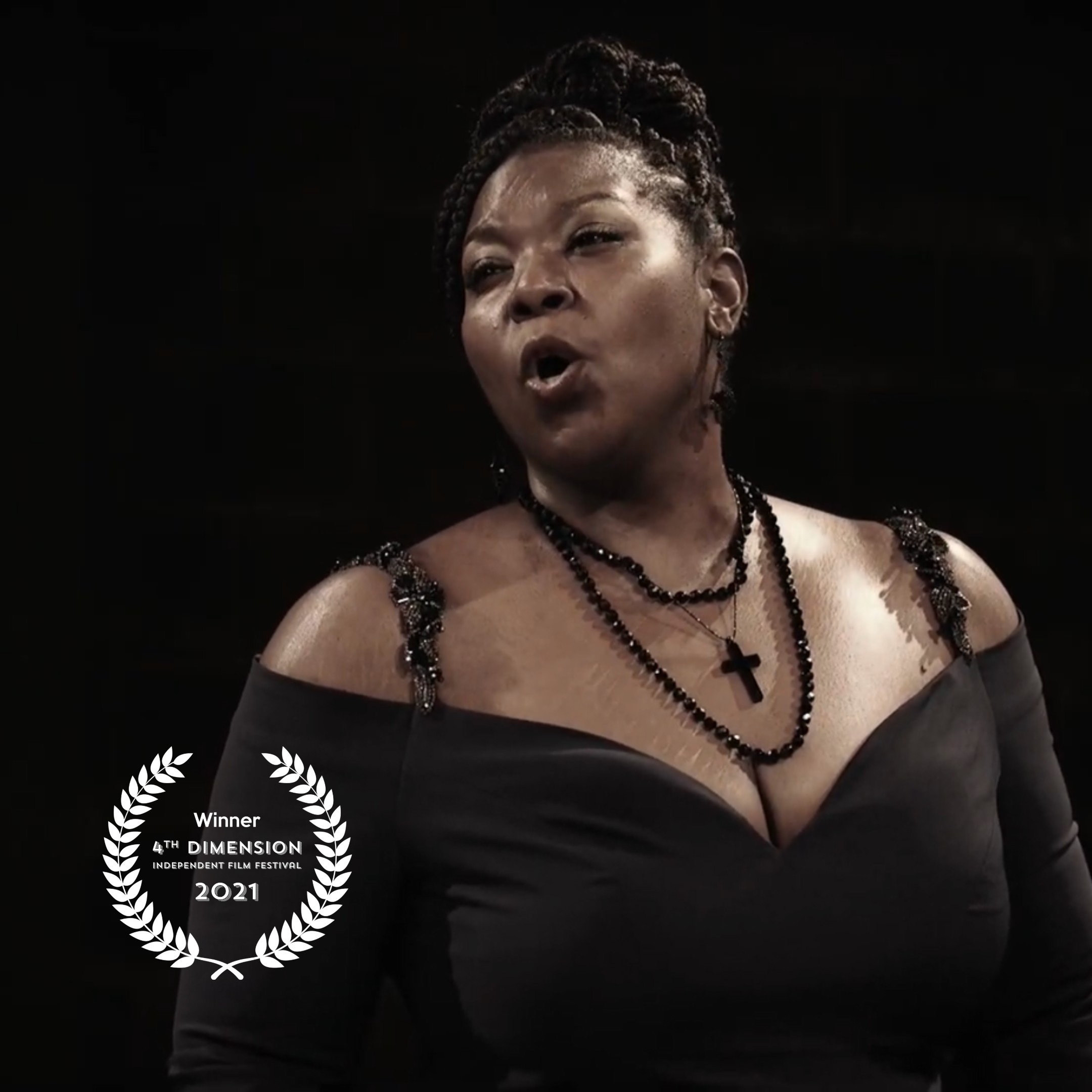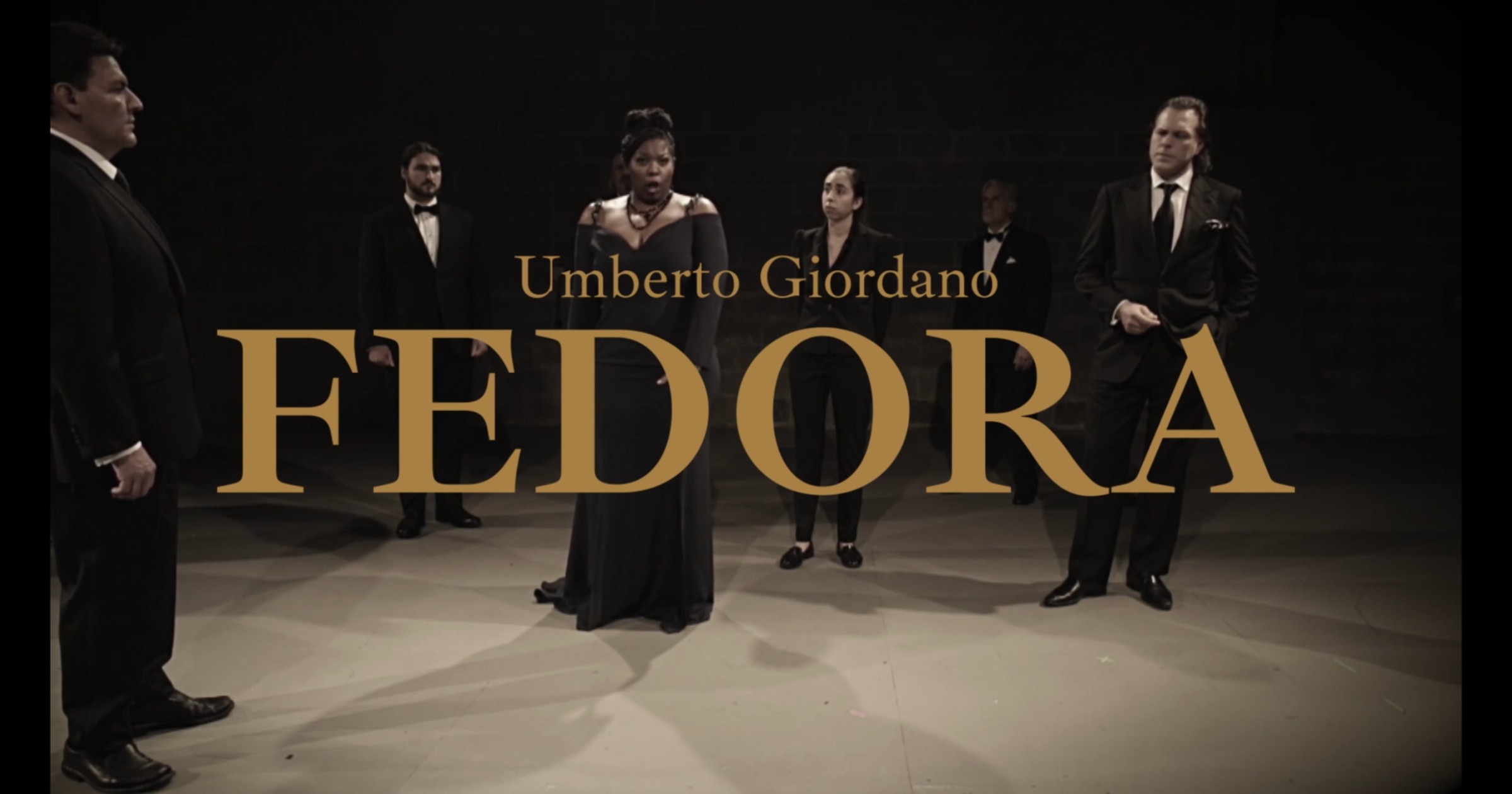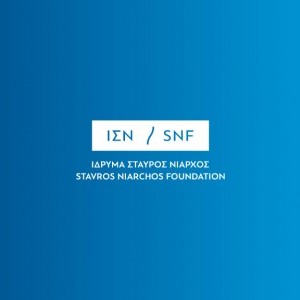FEDORA IS STREAMING ON YOUR HOME TV
Click on the Link below to download the free MyHomeTV app:
OPERA NEWS | FEDORA
TEATRO GRATTACIELO, which gives a concert performance of a single verismo opera each year, had long planned a Fedora for rising spinto soprano Michelle Johnson, and they weren’t going to let a pandemic stop them. Giordano’s opera was, necessarily, done in a compromised form. Presented virtually beginning December 1 as a recorded and edited video shot at Brooklyn’s Target Margin Theater, it had only a piano as accompaniment. Of course, this was not the ideal way to experience this work. Like most verismo operas, Fedora suffers in a concert staging—you want to see these characters carrying on, and living the full dramatic moment—but the cast remained fully committed despite the imposed straitjacketing. And although Giordano’s lush, fiery orchestration was missed, Grattacielo’s music director Israel Gursky accompanied with sensitivity and dramatic power.
Johnson was very much the star of this diva showcase, and she delivered with the full-throttle intensity verismo calls for. This opulent-voiced singer clearly knows her Muzio and her Olivero. She maintained total dramatic commitment, and wielded her big, wide-ranging instrument with aplomb without ever stinting on textual insight. Rich top notes were matched by thrilling descents into the chest register, and she used glottal attacks sparingly but effectively. She is an ideal champion of the verismo style.
Her Loris, Jeremy Brauner, showed off fine, easy top notes in his famous entrance aria “Amor ti vieta,” which gives a tenor little time to warm up. He sang his role with appropriate Italianate ardor and handsome tone. As De Siriex, baritone Marcello Guzzo brought a welcome darkness of timbre and presence to his dramatic scenes with Fedora; in his aria “La donna russa,” he seemed more comfortable in the slower middle section than in the rapid-fire opening and closing. Maria Brea did not make the strained soubrette role of Olga any less tiresome by flouncing through it with a bored, spoiled demeanor, nor did she succeed at enlivening a restored Act II aria that is often cut.
In comprimario roles, Rubin Casas, Samuel White, and Jordan Weatherston Pitts all showed promise. Brian Montgomery made the most of his brief scene as the distraught coachman Cirillo, but his tone was impeded by a prominent wobble.
Stage director Malena Dayen had an unenviable task. She clearly did her best, but social distancing is just not what this highly theatrical piece is about. Better was the dramatic lighting scheme by Jon DeGaetano, which probably would have sufficed had stage movement been dispensed with. —Eric Myers
OPERAWIRE | FEDORA
With Christmas approaching, more and more opera companies — big and small, having no alternative in view, have come to accept the online space as their new address. But still, this new home seems alien and risky. There’s so much to be afraid of, to avoid, to make mistakes with. Streams remain uncharted lands for the opera artists and video professionals have yet to fully adapt to the industry needs.
While major opera houses reflect on the advisability of filming and showing new productions, more flexible independent opera companies are paving their own, difficult ways on screens. They simply have no more time to wait.
Trying to stay afloat, smaller productions face the biggest challenges. How to fund a production is the very first big question, and certainly the most difficult one. But there are many others.
How do you meet the audience’s expectations in the set design, sound quality? How do you find the right video producer? Where do you film? Where does the orchestra fit in? How do performers act while maintaining social distance?
But fortunately, there’s another topic — the one with a very bright and clear response: Who will sing? The number of singers out of work is incalculable. And every artist getting a job, especially in a new production, surely brings all their energy and skill to show the best result. So when I see various modern productions refusing to use an expensive set design or the big orchestras, I know exactly what they are betting on.
Teatro Grattacielo’s darker, sepia-toned “Fedora,” as directed by Malena Dayen, is an opera you need to see today. It’s here to give you hope, that tomorrow exists even for those collectives who are now forced to abandon even the most familiar basis of opera performance but not giving up on the big artform’s potential as a chamber concert format. And in “Fedora,” you can see how everything that has been cut off can be replaced and enriched with a vengeance using smart and witty solutions.
Minimalist and modern in the set design, Dayen’s version of the work is highly rich in emotions. The light, the very technical harmonization of the voices and piano, the acting — it all hits to the heart when we are devoid of distractions such as decorations and costumes.
Accepting the New Rules
Finally, the close-ups don’t force the eyes to concentrate on the details we never needed, but let us get closer to the singers and their special artistic approaches. I do believe, that the personality of Michelle Johnson, her endless pleasure of singing, made the soprano a convincing Fedora more than any princess dresses could ever do. And the big and devoted eyes of mezzo-soprano Eugenia Forteza built her character and defined her role before she sang her first tune.
The single piano accompaniment occasionally complemented by fisarmonica is surely not the orchestra, but conductor Israel Gursky makes it sound brighter, and surely more suitable inside these brick walls. His reading of the late 19th-century score is bold and not afraid of silence. His piano lines can both argue with the vocal lines and support them, as the reality of the play can both hit or cheer the characters.
When I think about Giordano’s “Fedora,” I immediately recall a recent independent “Study of Systemic Discrimination Against Women in Opera.” The source itself might surely be a bright example of such discrimination — though the title role is written for the soprano, 10 male roles against only three females ruin all the joy.
But fortunately, Teatro Grattacielo’s “Fedora” fights these sad statistics with its special courage and charm. The choices for the main characters are simply incomparable. Michelle Johnson in the title role is simply irresistible. She maintains her voice on full power throughout the whole performance but manages to smoothly transform it into a deep and gentle tone in her last minutes.
#GirlPower
Maria Brea, who created the role of Countess Olga with her seemingly unfettered vocal abilities, conquers the entire stage with her every appearance. Her cheerful soprano fully reflected the sparkling temper of her heroine. Forteza and soprano Kinneret Ely in their shorter roles also bring an absolutely special sound into the cold surrounding.
Jeremy Brauner used his tenor voice to the maximum. Though his voice often overmodulated on the recorded track (no doubt a recording challenge rather a vocal one), the range of the emotions that he managed to convey, made his character amazingly credible.
Another standout was baritone Marcello Guzzo, who portrayed De Siriex with incredible vocal polish and elegance.
The rest of the cast, including Rubin Casas, Michael Gracco, Brian Montgomery, Jordan Weatherston Pitts, Pavel Suliandziga, William Desbiens, and Rick Agster, also proved to be very talented in interpreting their roles. Unfortunately, there were some major inconsistencies in how their voices were picked up by the microphones during major ensembles, resulting in some inconsistencies in the overall sound quality.
Desperate times call for desperate measures. And here, today we see the earliest brave results of first attempts. Attempts to reach the audience that is locked inside their homes and inside their anxious minds, those who barely reach out any further than their TVs.
Opera companies today call for their audience, “Come and see, we are still here. But now we are different. Even doing what we did our whole life, today we do it differently. Imperfectly and with some mistakes, connected to the technologies we are so far from. But we will learn, and bring our art to you over and over again.”
And I believe, though today the whole industry is far from the final solution to the problem, the musicians from the Teatro Grattacielo and director Dayen must be happy and proud – they definitely nailed it. And I only hope, they will soon see the response from the audience. Whatever one may say, this is the game of reciprocity.
OPERA UK | FEDORA
For 23 seasons Teatro Grattacielo has provided a yearly staging or concert staging of a lesser-known verismo work, sating the appetite of those New Yorkers yearning for II piccolo Marat or La cena delle beife. The tireless company founder Duane Printz yielded the reins as artistic director last year to the baritone Stefanos Koroneos. Covid-19 postponed this autumn’s planned performances of Fedora with Csilla Boross and Francesco Anile, who were unable to travel Stateside. The company’s longtime music director Israel Gursky opted for piano accompaniment—inevitable if at some cost to Giordano’s less than extraordinary inspiration, rather thin beyond the familiar earworm Amor ti vieta’. The show, directed by Malena Dayen, was filmed in October at Brooklyn’s Target Margin Theater, for streaming on Vimeo. Dayen’s staging, mainly a matter of lighting, stance and judicious video editing, proved well considered if static.
Fedora has been staged at the Met in three star-fuelled productions: 1906-7 (with Lina Cavalieri and Enrico Caruso), 1923-5 (Maria Jeritza and Giovanni Martinelli/Beniamino Gigli) and 1996-7 (Mirella Freni and Placid° Domingo). Met audiences always adored Freni, but her princess proved less than combustible. As with Callas and Medea, most listeners who have any strong ideas about what makes a true Fedora got them from an exceptional past performer’s recordings: in this case Magda Olivero. Her musically scrupulous 1969 portrayal gives the character dramatic stature that eludes most.
Had Grattacielo caught itself a Fedora? I’ve seen Michelle Johnson build impressive veristic credentials including Respighi’s Silvana (in La fiamma) at AVA, the title role of his Sakiintala at Grattacielo, a Philadelphia Manon Lescaut, Minnie in Louisville and Suor Angelica with her mentor Martina Arroyo’s Prelude to Performance programme. Her confidently acted assumption here—an unusually full chest voice and warm middle tones, wedded to textually illuminating phrasing—dominated things as Fedora must and augured well for eventual Toscas and Maddalenas. Gursky enforced good ensemble, dispatching the piano part with elegance and flair. Both Johnson and Jeremy Brauner’s Loris would have benefited from an orchestral cushion under their substantial spinto voices. Not an animated actor, Brauner produced decent, dark tone, if rarely varying from mezzo forte. In the `personality part’ of De Siriex, Marcello Guzzo’s experience told in manner and dynamic variety. Maria Brea (Olga) channelled the right look and energy but sounded rather shrill. Ruben Casas (Grech) fielded a solid bass; Pavel Suliandziga (Sergio)
DAVID SHENGOLD
CROSSING OVER | PARTERRE BOX
The assassination of Tsar Alexander II by Nihilists in 1881 was far too thrilling an event not to inspire Sardou to derive a play from it for his girlfriend, Sarah Bernhardt. Of course, the censors demanded no Tsars be damaged or even mentioned in the action; instead, the piece concerned Nihilists who murder the fiancé of a princess named Fedora. She vows revenge and lures the aristocratic murderer to a trap in her home in Paris … where they fall in love…. (Violent twists of emotion were specialties of the Bernhardt-Sardou team.)
A young composer named Umberto Giordano saw Sarah play Fedora, and lusted to make an opera of it. Generations earlier, Verdi would have done so at once, but copyright laws had come into fashion and Giordano was, in Sardou’s opinion, a nobody. He wanted a top composer to set his play. Only after Andrea Chénier had given Giordano sufficient reputation was permission granted, and Fedora was composed for Gemma Bellincioni. An up-and-coming tenor named Caruso created the role of her lover, Loris.
Teatro Grattacielo, which has presented concert performances of Verismo operas for 30 years, chose Fedora for a winter’s semi-staged offering. The company usually presents works with a sizable orchestra and chorus—Verismo’s chief distinction from earlier Italian opera is the rich orchestration devised by composers who had studied Wagnerian style—but Fedora, a short opera with no chorus, many small roles, and only two big ones is ideal for Verismo in times of Pandemic.
The orchestra is replaced by a piano, played by company maestro, Israel Gursky, who easily doubles in the role of Lazinski, “the new Chopin,” a Polish pianist who performs in Fedora’s salon but never sings a note. Besides Fedora and Loris, the only roles of any size are a French police chief and a dizzy countess for whom “it’s so delicious to conspire.” Actually, the most interesting characters in this story never appear at all: Fedora’s murdered Vladimiro, his sinister father, the chief of the Tsar’s police, Loris’s faithless wife, and his drowned younger brother.
The cast were all carefully tested before removing their masks to perform, and the sets and costumes are basic black. (No Paris salon, no Swiss lake views.) Malena Dayen directed the cast, and without furnishings to distract them, they prowled the stage with sinister energy, exchanging significant looks and deadly secrets as though fearing Nihilists behind every drapery. The lighting of the spare set is by Jon DeGaetano.
The most commanding figure on the stage, properly, was that of Fedora, Michelle Johnson, a recent Met National Council Auditions winner. She piled her hair majestically high and let her décolletage plunge deliciously low, the better to display the jeweled cross on which she swears vengeance and other passionate Verismo sentiments. This is a good thing, as the cross is a brooch concealing (as you expected) a fatal poison—but for whom? Johnson took a little time to fully engage the support of her large, glowing instrument, but by the love duets of Act II she sounded certain and amorous throughout a deep range. Act III, and its designated tragedy, brought full-throated remorse. This is, after all, her opera.
Loris Ipanov was Jeremy Brauner, acting and singing with a dark lyric ardor and an appealing clarity of tone. “Amor ti vieta,” the only tune anyone remembers from this opera, was full of yearning, and his romantic sound and effortless vocal production gave great pleasure—he had no trouble at all keeping passionate pace with his princess. I hope to hear him soon in roles that offer him more to do.
Marcelo Guzzo (De Siriex), made a suave and very tall courtier, Rubin Casas (Grech), was alarmingly theatrical as a Russian counterspy, and Maria Brea charming as Countess Olga, Fedora’s flibbertigibbet sidekick. There are nine or ten roles of no significance in this opera, mostly in the salon that is background for Fedora and Loris’ mutual seduction, but they all must be sung well. All were ably cast, reminding us how full New York is of singing talent, eager to pour itself into our ears, in perilous confrontation, face to face.
JOHN YOHALEM
VOIX DES ARTS
UMBERTO GIORDANO (1867 – 1948): Fedora — Michelle Johnson (Principessa Fedora Romazoff), Jeremy Brauner (Conte Loris Ipanoff), Marcelo Guzzo (De Siriex), Maria Brea (Contessa Olga Sukarev), Samuel White (Desiré), Eugenia Forteza (Dimitri), Rubin Casas (Grech), Michael Gracco (Lorek), Brian Montgomery (Cirillo), Jordan Weatherston Pitts (Barone Rouvel), Rick Agster(Boroff), Kinneret Ely (Un piccolo savoiardo), Pavel Suliandziga (Sergio), William Desbiens (Nicola); Ezio Pelliteri, accordion; Israel Gursky, piano and conductor [Malena Dayen, director; Jon DeGaetano, lighting designer; Matthew Deinhart, assistant lighting designer; Sangmin Chae, projections; Enrico Venrice, editing; Nicole Russell, assistant conductor; Streamed performance by Teatro Grattacielo, filmed at Tagret Margin Theater, Brooklyn, New York, USA, in October 2020]
Use of only ingredients of the highest quality does not transform an indifferent cook into a Michelin-starred chef. Similarly, utilizing superlative components in the making of an opera guarantees neither the resulting score’s merit nor its success. Opera’s history abounds with accounts of the failures of many pieces with plots drawn from the revered pages of Virgil, William Shakespeare, Johann Wolfgang von Goethe, and other literary illuminati, but works like Berlioz’s Les Troyens, Verdi’s Macbethand Otello, and Massenet’s Werther reveal what delicacies can emerge from musical minds when they are enticed by words worthy of their melodies.
From the first printings of his early poetry and his 1831 novel Notre-Dame de Paris, still one of the most familiar novels of the Nineteenth Century, Victor Hugo influenced French culture and global perceptions thereof to an extent that few of his fellow writers have approached. Three years before Hugo’s death in 1885, the vibrant Parisian theatrical community was enchanted by the much-discussed actress Sarah Bernhardt’s first performance of the title rôle in a new play by Victorien Sardou, whose work had already been before the public with varying degrees of acceptance for three decades. Their 1882 collaboration, Fédora, solidified an alliance that produced a progression of new plays including La Tosca and Madame Sans-Gêne via which Sardou and Bernhardt would challenge Hugo’s dominance—and, in the inspiration of operatic adaptations of their creations, surpass it.
The appeal of Sardou’s gritty realism extended beyond France’s borders, spilling over the Alps and into Italy’s operatic centers. In Milan, the allure of Bernhardt’s passionate Fédora fascinated the thirty-year-old Umberto Giordano, who sought a subject for a new work to match the success of his 1896 opera Andrea Chénier. Employing a libretto by Arturo Colautti that preserved the vivid melodrama of Sardou’s play, Giordano’s Fedora premièred on 17 November 1898, in Milan’s Teatro Lirico, a prestigious theater that also hosted the début performances of operas by Antonio Salieri, Gaetano Donizetti, and Ruggero Leoncavallo. The reception that Fedora garnered in Italy rivaled that received by Fédora in Paris, the widespread but short-lived popularity of Giordano’s opera, alongside the brief notoriety of the composer’s later setting of Madame Sans-Gêne and the enduring prominence of Giacomo Puccini’s Tosca in the international repertory, securing Sardou’s place amongst literature’s most fecund sources of operatic fodder.
Pining to reclaim some incarnation of normalcy during the COVID-19 pandemic has spurred extraordinary ingenuity in the Performing Arts community. With countless performances having been cancelled in accordance with efforts to protect vulnerable populations from the virus, opera companies have adapted their initiatives to the same technologies that allowed businesses and schools to function remotely, uniting artists with audiences via innovative media. Never content to bow to convention even during the best of times, New York’s Teatro Grattacielo collaborated with Camerata Bardi Vocal Academy to mold a streamed production of Giordano’s Fedora into a momentous experience that both transcended the inherent detachment of the medium and recreated the visceral melodrama of Sardou’s play and Giordano’s still-under-appreciated score with greater immediacy than many lavish stagings with full orchestras and on-site audiences manage to engender.
Performing Fedora with minimalistic scenic designs and singers donning formal attire proved wholly effective in rendering the three disparate settings for the action, the slain Vladimiro’s St. Petersburg palace in Act One, Fedora’s Paris salon in Act Two, and the princess’s Swiss villa in Act Three. Allied with the evocative work of lighting designer Jon DeGaetano and assistant lighting designer Matthew Deinhart, media artist Sangmin Chae’s projections unobtrusively created apt visual atmospheres in which interactions among characters were always the central focus. Capitalizing on the intimacy of the production’s filmed format, Malena Dayen’s direction lent the opera’s action uncommon clarity: regardless of the number of singers on screen and the sameness of their dress, the individual identities of the characters singing and the significance of their utterances were consistently apparent.
Particularly in opulent stagings, the profoundly personal nature of Fedora’s exchanges with Loris amidst the hubbub of Act Two is sometimes obscured, but Teatro Grattacielo’s Fedora elucidated every conflicted emotion and convoluted detail of the opera’s political backstory. A good Fedora brings the implausible plot to life: this Fedora intelligently and engagingly brought the realities of life during a pandemic to a century-old opera, the psychological implications of isolation, suspicion, and loss suffered in lockdown manifested in an eloquent realization of Giordano’s score.
Rather than adapting Giordano’s score for performance by a number of musicians that would have complied with restrictions on mass gatherings, Teatro Grattacielo’s Fedora partnered the singers with the dexterous pianism of conductor Israel Gursky—a sensible decision, as a substantial portion of Act Two is accompanied according to the composer’s instructions by a pianist portraying Boleslao Lazinski, a fictitious ‘nephew of Chopin.’ Hearing the full score played on the piano highlighted the influence of Chopin on Giordano’s music, particularly the Polacca and Notturno in Act Two. Gursky played the opera’s Andante mosso opening bars with elegance that evolved first into playfulness and later into desperation and grief as Act One progressed. The performance of the Act Two intermezzo was radiant, its reprise of the theme of Ipanoff’s ‘Amor ti vieta’ phrased with fervor. Complemented in Act Three by the marvelous performance of accordionist Ezio Pelliteri and aided throughout the opera by assistant conductor Nicole Russell, Gursky shaped a fittingly fervent but sensitive traversal of Giordano’s score.
Under the leadership of Artistic Director Stefanos Koroneos, Teatro Grattacielo assembled a sterling company of artists for this Fedora, both perpetuating the company’s legacy of savvy casting and demonstrating that present hardships have only galvanized musicians’ dedication to their craft. The brief song of the piccolo savoiardo in Act Three exemplified this spirit of reawakening, the lines voiced with an apt aura of bright-toned innocence by soprano Kinneret Ely that contrasted tellingly with mezzo-soprano Eugenia Forteza’s urgent singing of the traumatized Dimitri’s responses to Fedora’s interrogation in Act One. Tenors Samuel White and Pavel Suliandziga and baritone William Desbiens projected surprising individuality in their strongly-sung portrayals of Desiré, Sergio, and Nicola, and the Lorek and Grech of baritone Michael Gracco and bass-baritone Rubin Casas were similarly enlivened by insightful vocal acting. Baritone Brian Montgomery delivered Cirillo’s lament for his slain patron wrenchingly but with welcome—and rare—restraint, and tenor Jordan Weatherston Pitts and bass Rick Agster made much of Rouvel’s and Boroff’s few words, drawing impetus for their vocal colorations from the text.
Giordano’s music for the spirited Contessa Olga Sukarev was sung with elegance, tonal beauty, and an apt air of hauteur by soprano Maria Brea. From her first lines at Fedora’s soirée in Act Two, this was indisputably a countess who travelled in the most exclusive social circles and was accustomed to ensuring that she remains the belle of every ball. Brea sang ‘Io sono il capriccio leggero, veloce’ delightfully, contrasting with the gravitas of Fedora’s exchanges with Loris precisely as Giordano intended and producing her top As with youthful ebullience. Reacting to De Siriex’s commentary on Russian womanhood, her account of ‘Il parigino è come il vino’ was a good-natured but barbed rejoinder. Brea also lent fleeting moments of levity to Act Three, punctuating her impassioned voicing of ‘Sempre io stesso verde!’ with a shimmering top B and continuing Olga’s contest of wits with De Siriex with flippant conviction. Despite the limits on opportunities to act the rôle imposed by the pandemic, Brea’s characterization of the vivacious countess lacked nothing, the voice and the singer’s innate theatricality rendering stage antics and glittering costumes unnecessary.
Baritone Marcelo Guzzo was a De Siriex whose burnished, imposing vocalism matched his debonair diplomacy. Subtly commandeering the questioning of the wounded Vladimiro’s servants whilst also comforting and reassuring the devastated Fedora in Act One, Guzzo’s De Siriex sang and acted forcefully. Though it is seldom included in baritones’ recital and recording repertoires, De Siriex’s aria in Act Two, ‘La donna russa è femmina due volte,’ is one of Fedora’s few easily-excerpted numbers, and Guzzo’s undaunted mastery of its quicksilver rhythms and troublesome tessitura exuding irrepressible vitality. This De Siriex neither gloated nor goaded in his conversations with Fedora, relaying rather than sensationalizing the news of the deaths of Ipanoff’s mother and brother, for which Fedora’s accusation of her lover as her fiancé’s murderer was the catalyst. His vivid sparring with Olga in Act Three revealed impishness, jovially rendering the flirtatious rapport between the decorous diplomat and the coy countess. Guzzo voiced ‘Fatevi cor contessa!’ and ‘Lui! Cadde per l’empia sua crudeltà’ with obvious cognizance of the literal and suggestive meanings of the words. Throughout the performance, the baritone’s intelligible diction heightened the refinement of his depiction of De Siriex, but the character benefited most from Guzzo’s superb singing
Like Wagner’s Isolde, the titular heroine of Fedora ultimately falls in love with the object of her pursuit of vengeance, the man responsible for the death of her betrothed, though no sorcery facilitates Fedora’s romantic attraction to the brooding Loris Ipanoff. The rôle of Loris was entrusted in the first production of Fedora to Enrico Caruso, who recorded the character’s famous aria with the composer at the piano four years after the opera’s première. This established a benchmark to which tenors’ performances continue to be compared. Following the examples of singers including Ramón Vinay, Carlo Bergonzi, and Plácido Domingo, Teatro Grattacielo’s Loris, Jeremy Brauner, started his vocal studies as a baritone and later transitioned to singing tenor rôles. There were subtle reverberations of his baritonal origins in his performance of Ipanoff’s music, as well as propitious reminders not only of Caruso but of other noted interpreters of Loris, namely Bruno Prevedi and Giuseppe Giacomini.
Brauner’s first appearance in Act Two made Ipanoff’s absence from the opera’s first act regrettable, his robust vocalism immediately raising the temperature of the performance’s simmering verismo. Wooing his Fedora with the Andante cantabile aria ‘Amor ti vieta di non amar,’ sung in recitals and concerts by virtually every tenor active since Fedora’s première, Brauner advanced Loris’s suit with ardor and a fine top A. The plangency of his singing of ‘Mia madre, la mia vecchia madre’ and ‘Vedi, io piango’ garnered the listener’s empathy as ably as it captivated Fedora’s heart.
The metamorphosis of Ipanoff from grieving son and brother to betrayed and ultimately despairing lover in Act Three sometimes elicits over-emphatic vocalism that obfuscates the wronged count’s vulnerability. Brauner’s singing never lacked power, but his characterization also limned the part’s poignant nuances. There was no artifice in his articulation of ‘O bianca madre, o buon fratello,’ Ipanoff’s anguish conveyed with affecting sincerity, and his brilliant top B♭ escalated the expressive urgency of his delivery of ‘Son qui, vicino a te.’ Brauner’s tone occasionally hardened in moments of duress, but his intonation was admirably secure throughout the range. In some performances, Loris is little more than a cipher with a famous aria: Brauner’s Ipanoff was a worthy quarry for his Fedora and a fully-formed character in his own right..
In addition to creating the title rôle in Fedora, soprano Gemma Bellincioni was the first interpreter of Santuzza in Mascagni’s Cavalleria rusticana and sang the eponymous spitfire in the Italian première of Richard Strauss’s Salome. First recorded in studio by Gilda dalla Rizza, considered by Puccini to be the ideal Minnie in his La fanciulla del West, Fedora has attracted sopranos—and a few brave mezzo-sopranos—with vastly different vocal endowments. No Fedora is more renowned than Maria Callas, whose 1956 portrayal at La Scala is rumored to have been documented on recordings that have never materialized, but no one is more closely associated with the rôle than Magda Olivero. There has been no other voice like Olivero’s, and her histrionic gifts were equally unique. Nevertheless, her Fedora is a model for fellow interpreters of the part, her shadow over the opera extending even longer than Caruso’s.
A successful Fedora might seek to emulate certain aspects of Olivero’s interpretation but must recognize that Olivero was inimitable. The foremost success of this production’s Fedora, soprano Michelle Johnson, was her intuitive formation of a portrayal of the dangerous but delicate princess that, like Olivero’s, honored Sardou and Giordano. It was especially gratifying to hear a singer at the height of her abilities as Fedora, the rôle so often being assigned to singers in the latter days of their careers, when the music’s demands, marginally narrower in compass and arguably less strenuous than those of Puccini’s heroines, mitigate reduced vocal resources. Johnson’s singing was commendably and often exuberantly free of compromise: the rôle was in the voice and performed with unflappable confidence.
Arriving at Vladimiro’s estate to assume her place as his intended bride in Act One, Johnson’s Fedora was discernibly a woman of a certain age, unquestionably in love with her betrothed but also enchanted by the prospect of being loved. Her statements to Vladimiro’s servants were genially imperious, but Fedora’s inner fragility was revealed in Johnson’s dulcet voicing of the beautiful Andantino espressivo ‘O grandi occhi lucenti di fede,’ her top A imparting the depth of Fedora’s affection. The simplicity of her singing of ‘Mio dolce Vladimiro! Sogno d’amor, di pace, di poesia!’ realized the full expressive potential of the music. As the gravity of Vladimiro’s condition became apparent, the change in Johnson’s demeanor was unmistakable, her Fedora’s amorous femininity acquiescing to primal ferocity as she probed Vladimiro’s household for information about his attack. Vowing to have justice, this Fedora’s ‘Su questa santa croce, ricordo di mia madre’ was genuinely moving, the soprano’s performance disclosing the shattered bond between Fedora’s happiness and her love for Vladimiro.
Johnson’s acting skills shone in Act Two, in which Fedora sets a trap for Ipanoff but ensnares herself when she falls in love with him. The magnitude of Fedora’s true objectives was apparent despite her feigned insouciance in the revelers’ company, her pursuit of Loris driven by verbal acuity and vocal potency. Reticence was audible in ‘Lascia che pianga io sola,’ the fractures in Fedora’s steely resolve widening into charms as she succumbed to her burgeoning love. Johnson thrillingly accepted Giordano’s challenge of an optional top C in the expansive duet with Loris, her voice soaring in ecstasy.
The caliber of Johnson’s artistry was confirmed in Fedora’s scene with De Siriex in Act Three. Learning that her implication of Loris in Vladimiro’s assassination led to the deaths of Ipanoff’s brother and mother, Johnson’s Fedora was overwhelmed by the consequences of her actions. The soprano’s command of line yielded a stirring account of ‘Dio di giustizia, che col santo ciglio,’ but Johnson achieved still greater heights of operatic expression with her ruminative singing of ‘Se quella sciagurata perdutamente avesse amato Vladimiro?’ and ‘Se quell’infelice qui stesse ai tuoi piedi.’ The voluptuous voice reduced to a thread of emotion in the authentic Olivero fashion, Johnson enunciated ‘Tutto tramonta…tutto dilegua’ with harrowing earnestness. Dramatically, Johnson offered a fascinatingly complete portrait of Fedora. Vocally, she sang the rôle with an assurance that is now seldom heard in performances of verismo repertoire.
Combatting COVID-19 has altered perspectives on art and artists’ practices, the necessity of avoiding gathering for performances accentuating the desire for shared artistic experiences. There is no adequate substitute for sitting shoulder to shoulder with friends and strangers in a theater, not merely hearing but feeling voices rise above an orchestra, but Teatro Grattacielo’s streamed production of Fedora was an act of sustenance, not one of surrogacy. Its musical integrity and dramatic values overcoming the limitations of its genesis, this Fedora reaffirmed that opera thrives on—and in—strife.
JOSEPH NEWSOME
https://www.voix-des-arts.com/2021/03/performance-review-umberto-giordano.html?m=1
FEDORA WINS TOP PRIZE IN 4TH DIMENTION INTERNATIONAL INDEPENDENT FESTIVAL

FEDORA IS OFFICIALLY SELECTED AT MUNICH VIDEO AWARDS FESTIVAL









